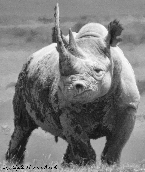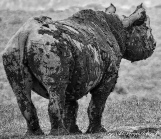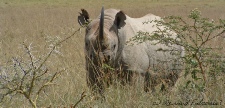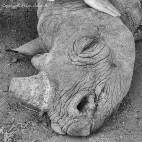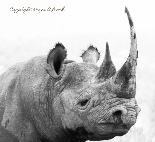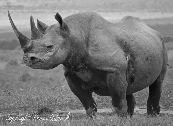


Copyright © All rights reserved. All Art Made By Keryn Adcock. Website Made by Keryn Adcock with Serif WebPlusX6. Terms of use & Privacy Policy
:MEET THE BLACK RHINO
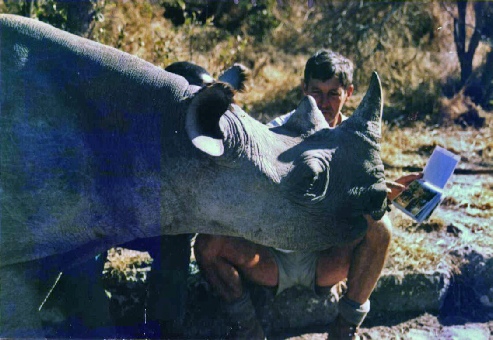 Calving
Ranging Behaviour
Danger-Level
Diet
Go to Links
Calving
Ranging Behaviour
Danger-Level
Diet
Go to Links
Please go to Links for sites which provide additional rhino information
Black Rhino have a 15.4-
The intrinsic rate of population increase in black rhino is around 9% per year. However
rhino areas stocked below habitat carrying capacity, or where food conditions are
good, and where the population has more adult females than adult males, can commonly
achieve average population growth rates of 10-
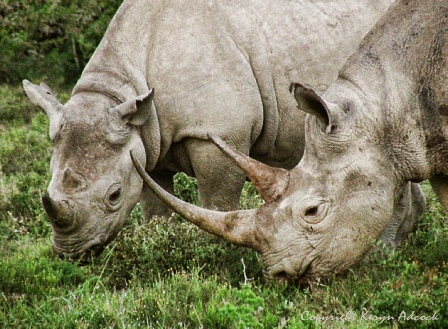
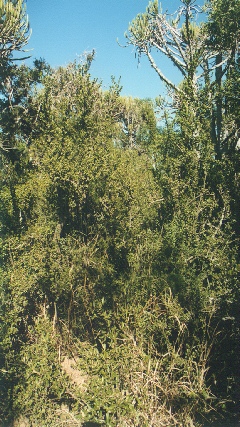
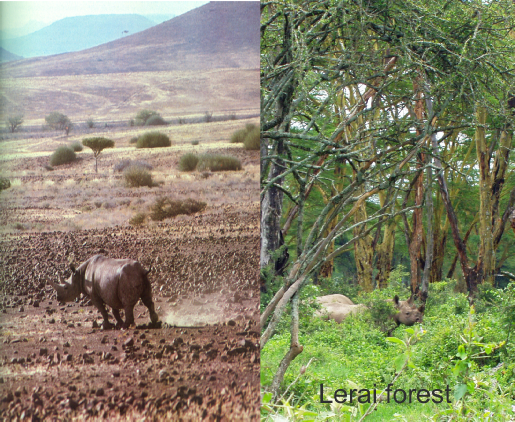
Black rhino can live in a wide range of habitats, including deserts,semi-
Rhino are water-
Black rhino are territorial, and dominant males will establish territories with minimal overlap with other dominant males. Younger, subordinate males are tolerated while still with their mothers and while they show subordinate behaviour. They will often have to fight to claim a territory, and often live at the edge of rhino society until strong enough to challenge the established bulls. Female and young black rhino live in small family groups within a home range which can overlap that of other groups and dominant males.
The territory or home range sizes of black rhino in an area do vary, but average range size is mainly dependent on the abundance of suitable food and water availability, and thereafter the area’s rainfall, soil fertility and topography features. For example in thickets range sizes can be as small as as 1 km2, but in deserts ranges can exceed 200 km2
Desert
Succulent Thicket
There is no doubt that black rhino are dangerous wild animals. They have a reputation
for being aggressive, short-
Photo courtesy of Richard Adcock, Photographer.[Website: http://Richardadcock.co.za]
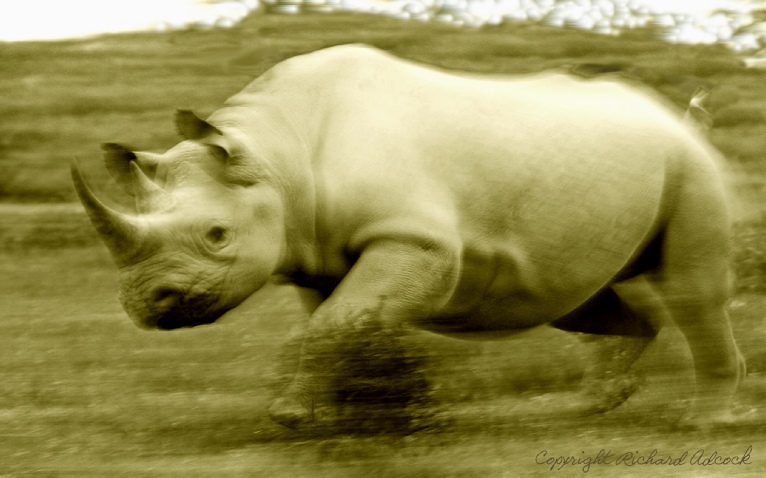
Rudi Loutit discusses rhino photography
with a young black rhino, Namibia.
This photo courtesy of Blythe Loutit, one of Africa’s hugely inspirational rhino conservationists, who sadly died in 2005.
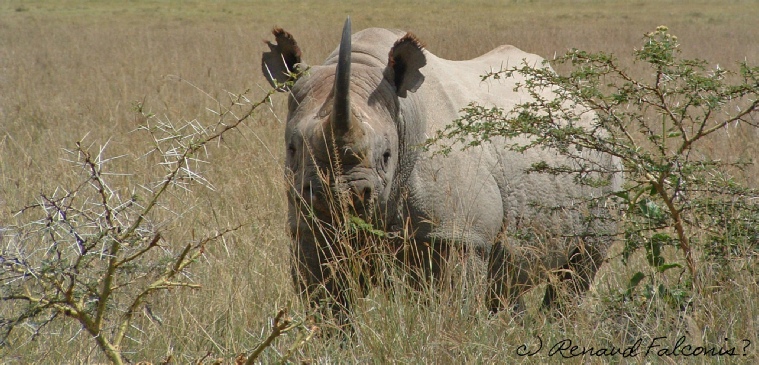
Black Rhino are browsers, meaning they eat primarily woody plants and herbs, not
grasses. Over 100 different species may be eaten during the year, but in most areas
80% of the diet is commonly made up from around 10 plant species. Young plants of
<2m are preferred. The importance of key plant species to black rhino means that
they are vulnerable to habitat changes which impact such plants, including severe
fire regimes, vegetation succession (growing too tall and change of species dominance
to less palatable species); and high densities of competing browsing species such
as impala, nyala, elephant, especially in fenced areas. The characteristic pruning
action of the black rhino’s bite can be seen on the left-
(Click outside of info-

